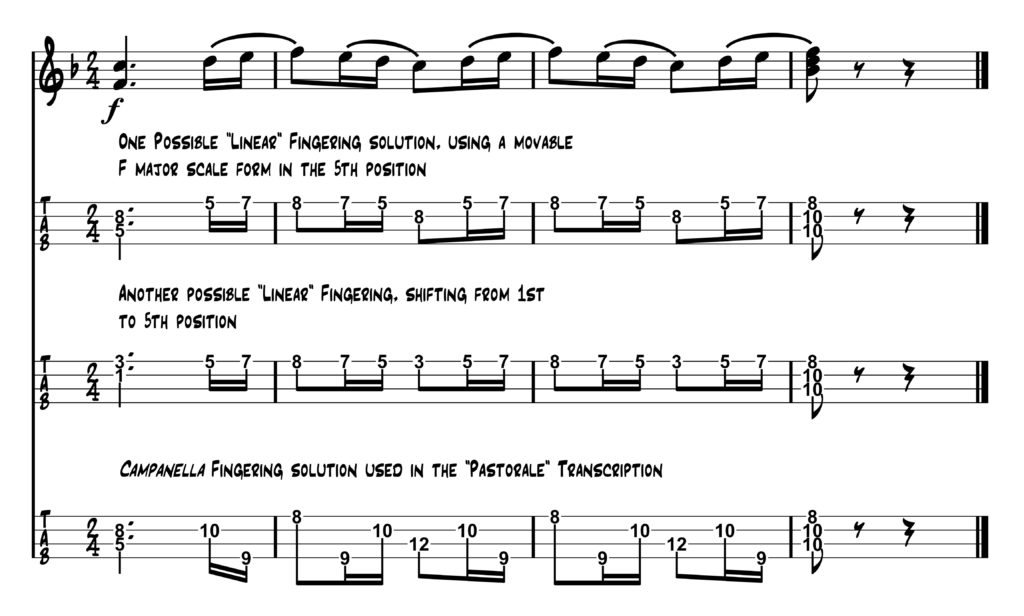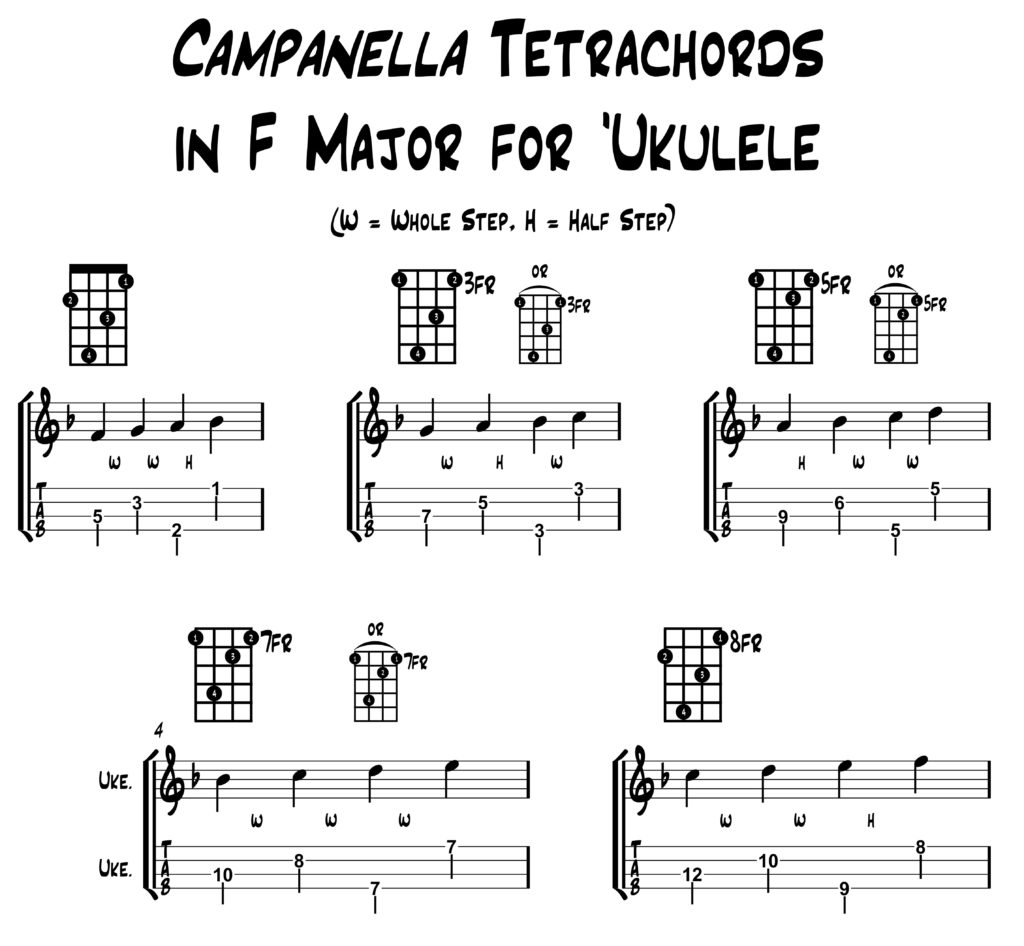Here is Episode 14 of “Beethoven of the Ukulele”. In this video I am performing pages 13 and 14 of the first movement score:
Only five more pages to go to the completion of the first movement, which will happen on October 8. Yay! At that point the first movement will be ready to perform in its entirety. You will also be able to watch a “composite” video of the first movement stitched together from all the weeks of filming that have been completed so far. The first movement will also be published next month, complete with standard notation and left-hand fingerings, and available for sale.
The passage at the end of page 14

is another demonstration of the campanella fingering technique, which is one of my favorite ways to place a melody on the ‘Ukulele fingerboard. You can see me demonstrate this in this week’s video, but here is the passage in I’m talking about, with standard notation and three different fingering solutions. The first two are examples of how you might play the passage in a “linear” way, and the final fingering is the way I decided to arrange the passage in the Pastorale transcription:

The notes that Beethoven uses are the upper four notes of the F major scale: C, D, E, F. These upper four notes form a tetrachord, which can be defined as a series of four notes separated by three intervals. Here’s the cool thing: Since there are four strings on the ‘Ukulele, one string can be used for each note in the tetrachord. Here’s a chart with all of the campanella tetrachords in the F major scale that can be found on the first twelve frets of the Uke: (Note: This only works for a ‘Uke that uses the common C6 reentrant tuning.) (Another note for you “true” music geeks: I’m aware that in much “traditional” music theory a tetrachord is defined as spanning the distance of a perfect fourth, but I included the four-note sequence within the scale that spans a tritone [three whole steps] just so I could illustrate how that is fingered as well.)

You might find that your fretting hand is in for a workout if you’ve never tried these before. It’s worth it, though. Playing the notes of a scale in a campanella style creates a magical, harp-like effect that is “idiomatic” to the reentrant tuning of the ‘Ukulele and difficult to duplicate on most other fretted instruments. As a bonus, playing the tetrachords this way is a great exercise to develop the flexiblity of your fretting hand!
Are you enjoying “Beethoven of the ‘Ukulele” so far? Is there anything in particular about the music or the ‘Uke that you would like me to discuss? Get in touch and let me know!
All the best to you!
-James
P.S. If you’re ready, you can study ‘Ukulele with me in person or online via Zoom! Click here for info about lessons!
Comments are closed.